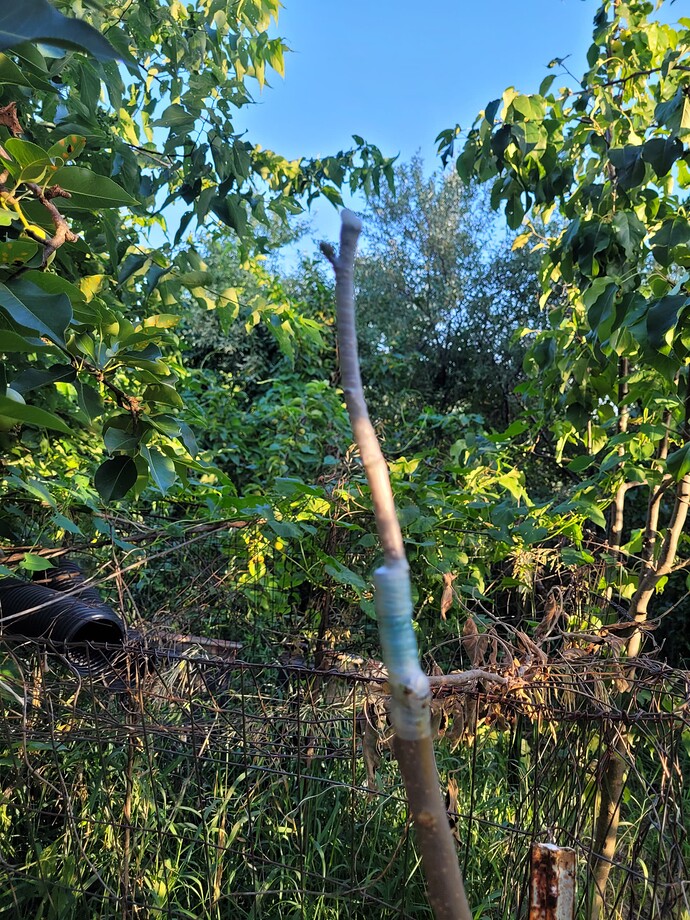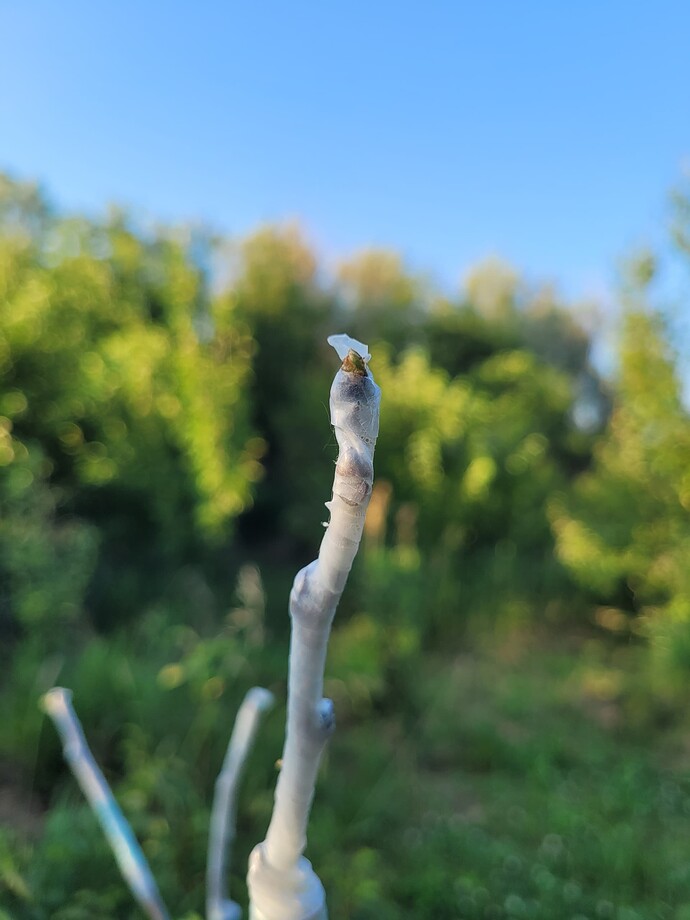I certainly aint. Though I’m not sure anyone is from anywhere any more increasingly, it seems. I do have some Scots-Irish roots and do know some of the Appalachian vernacular, picked up from music and documentaries mostly. I’m a transplant to my own corner of Appalachia, which I think has more in common with your neck of the woods than is commonly acknowledged. There is still a living tradition here involving some unique parlance and folkways. In terms of tree names, all aspens are known as “popple” and old timers will still refer to elms as “ellem”. There’s a funny extra syllable added here to a lot of words. I think it’s properly called a diphthong. So pine, for example, winds up as something like pi-ine. All curious to me, a refugee from nowhere really. Kindle those flames. There’s value in old ways and depth in old expressions for sure.
Also funny to consider things from the perspective of cultural exchange. Pepperoni ain’t from those hills neither, now is it?
I’m from WV. IMO, the pepperoni rolls are a marketing gimmic. Grandpa was in the deep mines 30 years and bet never saw a pepperoni roll
A good tale you tell, and etymology IS fascinating. Perhaps you are not aware that the original English name for North America was Virginia. A number of North American species- whether plant or animal- are known as ‘virginiana’. It has to do with them being endemic to N. America, particularly species which would have been encountered by colonists. Virginiana - Wikipedia
And I’ve never seen the sense in carpets, least of all bagging them up. Or should I say, puttin em in your poke…
Good link. I’ll dig into it later tonight. You did gloss over one detail though, which also speaks to my point about exchange (vs being “from here”).
And which one would that be, or perhaps we should stay tuned…
@hobilus
LOL!
Well, to narrow it down a bit notice that it is illegal to ship persimmon roots into CA – bareroot or otherwise.
But I did just order a few figs I had wait-listed at OGW, within a minute of receiving the email. And when I finished checking out their availability of those figs was zero.
that narrows it down?
Yes ![]()
This thread is concerned with persimmons. Any supplier I use for rooted persimmon trees or persimmon root stock must be from California.
These are early golden persimmons i recently grafted. There are 4 of these i did just over a week ago. Watered them today again. It is very dry here.
I’m glad your trying Early Golden. Any plans for one of the “Prairie” series – or did I miss it?
Yes i’m trying two of them this year. I’m also interested in knowing more about others. @39thparallel and i ate a bunch of different types in Lawrence and early golden was my favorite.
That says a lot about Early Golden in your environment.
Doesn’t Early Golden spit out male flowers as well?
Early Golden does produce male flowers. It is not consistent and usually on older trees. I discussed this with Jerry Lehman about 22 years ago while talking about breeding prospects for persimmons.
These Claypool documents are excellent that a forum member sent me.
Claypool Orchard Records copy.pdf (12.5 MB)
CLAYP.XLS (368 KB)
A forum member suggested i look at the 100-46 and i see what they mean now Diospyros, '100-46' American persimmon – Cricket Hill Garden
" Cricket Hill Garden
Diospyros, ‘100-46’ American persimmon
Diospyros virginiana
Variety description: This cultivar is one of the finest crosses to result from the American persimmon breeding work by Jerry Lehman of Terra Haute, Indiana. This early to mid-season ripening cultivar. Large fruit has a reddish orange blush and an excellent sweet flavor. Trees bear heavy crops. The pulp of the ripe fruit is recommended use in puddings, cookies and breads. Partially self-fertile female tree will produce seedless fruit without a male pollinator.
Site requirements: Persimmons grow best in a full sun location with fertile, well-drained soil. They are quite adaptable and will grow in poor, dry soils, though such sites are far from ideal.
Size at maturity: With pruning, trees can be maintained at 20-25’.
Pests and diseases: None of concern in the Northeast.
Hardiness: Will grow in USDA zones 5-9."
That could be a show stopper for many of us suburbanites.
The early golden has been grown since 1880 i love the flavor of that one! @39thparallel and i were eating those early golden back in 2016 and 2017 and i liked them ever since that time. Diospyros virginiana seed - #5 by clarkinks As i mentioned
" In 1880 the first named American persimmon was selected out of the wild in Illinois. This original variety, ‘Early Golden’, would go on to be the female parent for many of the cultivars developed throughout the twentieth century. Elwyn Meader of Rochester, New Hampshire, was interested in American persimmons and developed one supposed self-fruitful cultivar called ‘Meader’. Another one of the more famous American persimmon breeders was the late James Claypool who began his work in the 1970’s. He also worked with Professor J.C. McDaniel from the Unniversity of Illinois whom is responsible for selecting ‘John Rick’ and ‘Florence’ (5). Over the course of 20+ years Claypool evaluated over 2,000 trees and kept records describing the characteristics of each tree in his breeding project. As Claypool’s health declined in the early 1990’s various members of the Indiana Nut Growers Association decided to carry on his work (1); one of those individuals was Jerry Lehman, who has a 60-acre orchard in Terra Haute, IN. He has been working with persimmons there ever since and has a large repository containing some of the most diverse American persimmon genetics in the world. The breeding aims today remain largely the same as Claypool’s original criteria (1):
1.Reduce the long ripening period
2.Improve fruit size
3.Calyx holding to fruit when dropping from the tree
4.Increase the already wonderful flavor
5.Skin tough enough to hold fruit when it strikes ground
6.Better the color of skin or attractiveness
7.Reduce seed numbers
8.Eliminate black spots in fruit flesh
9.Improve pulp color & longevity when frozen"
“The tissue that heals grafts, “callus”, only grows in persimmons at warm temperatures, typically at least 25°C (77°F) .”
Persimmon bark grafting | Rick Shory.












